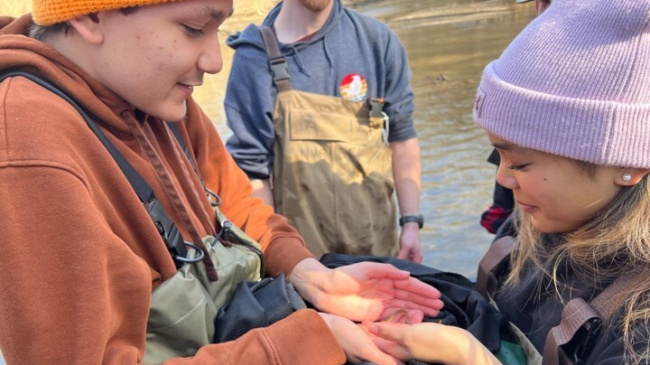Learn how communities are taking the lead to rethink, refuse, reduce, reuse, repair, and recycle plastics.
Earth Day is an opportunity for us to celebrate our blue planet. In honor of Earth Day 2024, we’re sharing success stories from education programs that made positive, tangible changes related to this year’s theme: Planet vs. Plastics. Whether these stories give you another reason to smile about our beautiful planet or even inspire you to celebrate in your own way, NOAA Education wishes you a happy Earth Day!
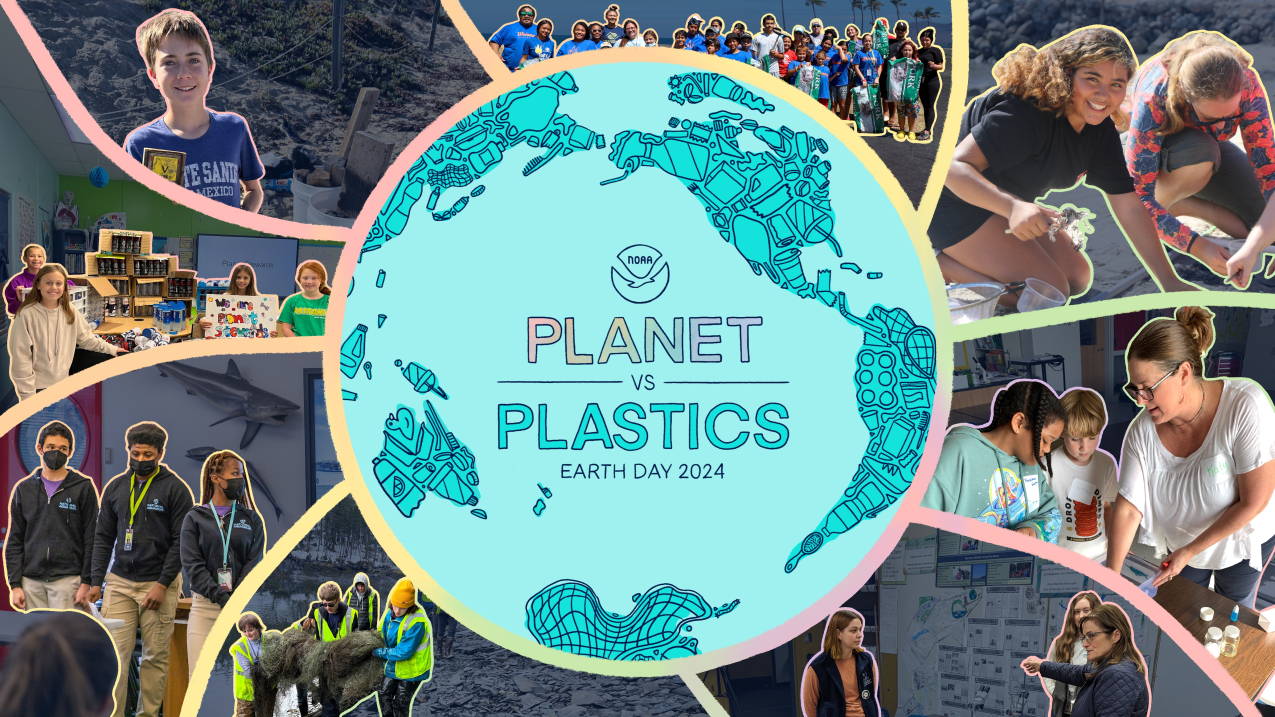
For this Earth Day, NOAA Education is highlighting education efforts across NOAA that are taking on Planet vs. Plastics.
Wai‘anae celebrates Get Into Your Sanctuary Day at the intersection of cleanups and community
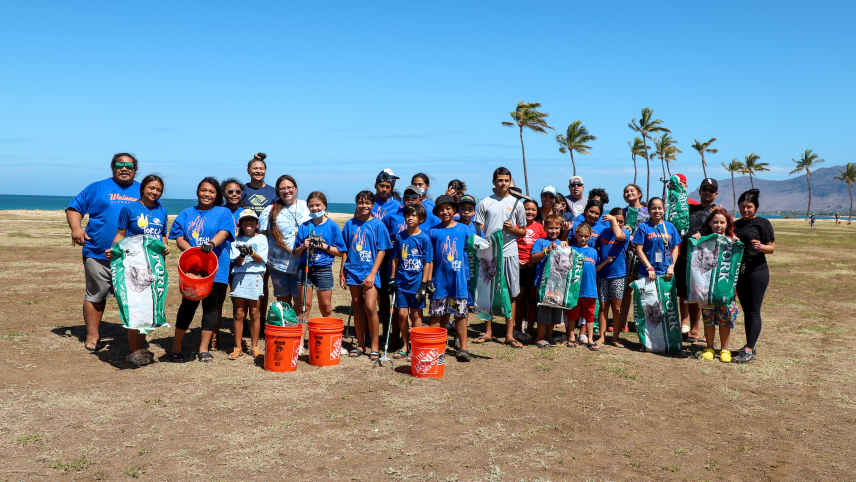
Papahānaumokuākea Marine National Monument O‘ahu staff partnered with Ko Olina Resort and local conservation organizations to celebrate Get Into Your Sanctuary Day. The event was held at Mā‘ili Beach Park on O‘ahu and featured a beach cleanup, a community art mural, a marine debris art exhibit, local entertainment, and ocean awareness and educational activities. Attendees engaged with organizations like the Boys and Girls Clubs of Nānākuli and Wai‘anae, the Division of Aquatic Resources, Wai‘anae High School Marine Learning Center, and many others. Talented Hawai‘i artists Ruben Aira, Mark Cunningham, and Susan Scott displayed art created from recycled objects, including discarded surfboards. They collected more than 290 pounds of trash from the coastline while local musicians and a hālau hula provided entertainment for volunteers.
Alaska school “sporks” change in lunchtime plastic use
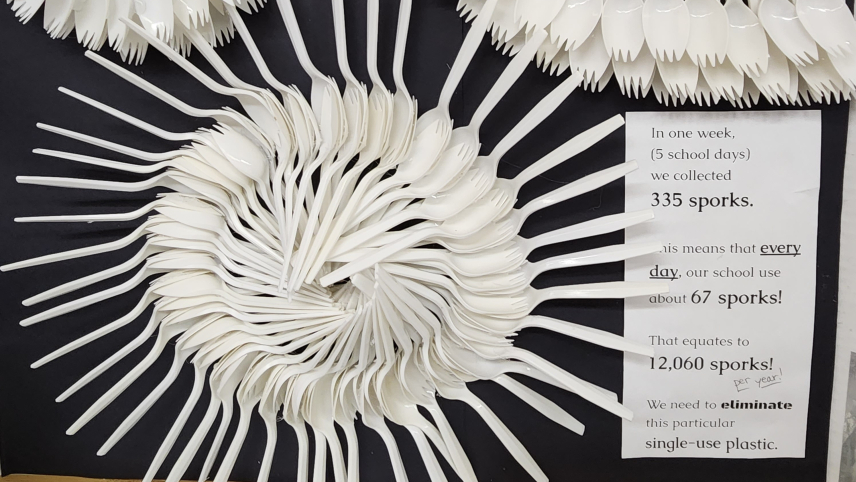
Students at Tongass School of the Arts and Sciences (TSAS) in Ketchikan, Alaska, are embarking on their second year as a NOAA Ocean Guardian School and focusing on education surrounding marine debris. This academic year, students implemented a program to replace single-use plastic sporks with reusable stainless steel sporks in their lunchroom. Because school lunches are prepared offsite and distributed to all Ketchikan district schools, TSAS did not have a commercial kitchen space or dishwasher. Using grant funds from the Ocean Guardian School Program, TSAS was able to purchase reusable sporks and a tabletop dishwasher. Using reusable sporks will keep an estimated 12,060 plastic forks from the landfill every year! “This is an excellent example of a relatively simple and inexpensive solution with a big impact for Ketchikan,” said Michelle Dutro, Alaska Sea Grant State Fellow with NOAA Fisheries. “We hope to see this same model implemented at other schools in the Ketchikan district in the coming years.”
Students upcycle marine debris to support a “Better Baja”

The Vermilion Sea Field Station, located in Bahía de los Ángeles in Mexico, is the home of the Aventureros program, a free year-round youth program that supports local students in discovering and caring for the marine and terrestrial worlds around them. These students, ages 7-17, are growing into the next generation of conservation leaders. Using previously collected local marine debris data and support from the NOAA Marine Debris Program, Vermilion Sea Institute team members are working alongside Aventureros to tackle marine debris at its source. Modeled as a place-based debris prevention initiative, Aventureros Averting Plastics for a Better Baja is engaging the local community in identifying approaches that extend the life cycle of products, encouraging proper disposal practices including the installation of four community-designed plastic waste receptacles, and eliminating single-use plastics. This initiative is also engaging local community members and businesses by hosting monthly beach and desert cleanup events, recruiting restaurants to participate in a sustainable takeout container subscription service, and centering community voices in local marine debris monitoring and prevention efforts.
Olympic Coast National Marine Sanctuary teaches students that microplastics are no small issue
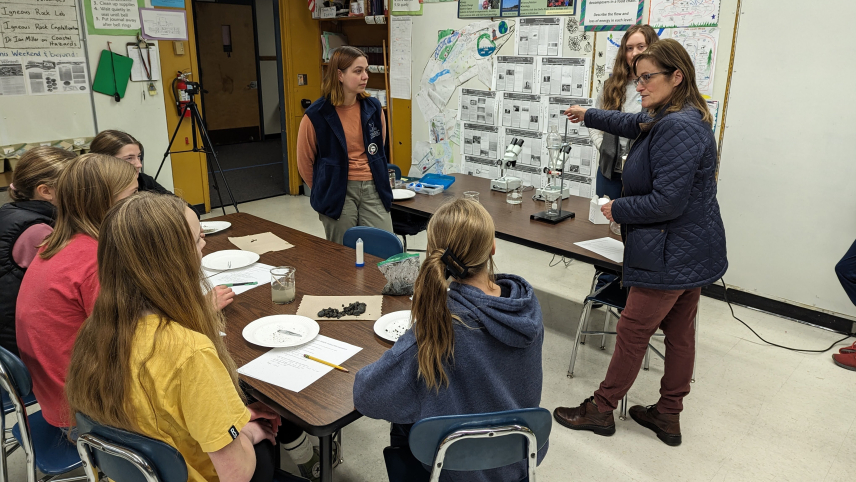
Olympic Coast National Marine Sanctuary’s education team recently visited two local schools to share information on the impacts of microplastics in the ocean. During the visits, the team led hands-on filtration labs for students to compare microplastic contents from nearby beaches. Five students from Stevens Middle School in Port Angeles, Washington, a NOAA Ocean Guardian School, learned about the harmful effects of microplastics in the marine environment. Through the lab activity, they learned how to observe and document plastics found in marine environments. The students hope to incorporate a technological solution as they focus on removing microplastics and other marine debris in their upcoming project for the Technology Student Association competition. Additionally, marine biology students at the Peninsula College campus in Port Townsend, Washington, compared microplastic contents from three local beaches. The lab concluded with a discussion of the different types and colors of plastics discovered, their possible origins, and potential ways to prevent further microplastic pollution, ranging from large scale infrastructure to everyday household habits.
Go fish! Planet Stewards work to improve sustainable fishing practices
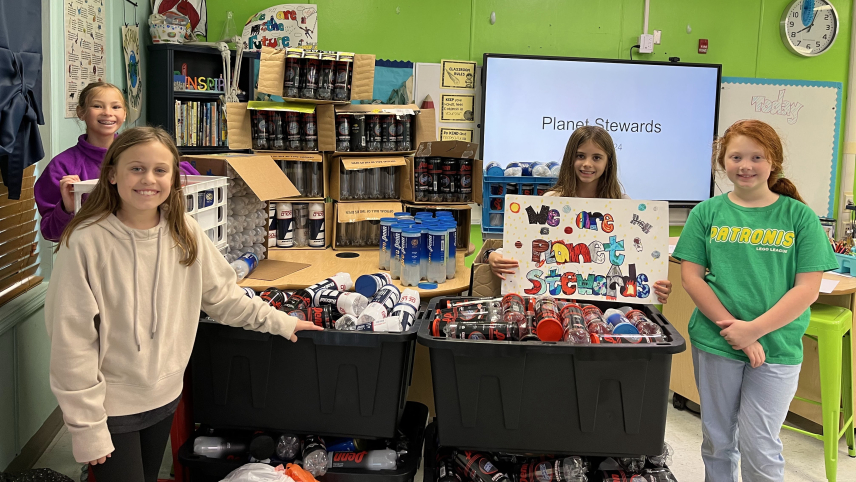
Patronis Elementary School students in Panama City Beach, Florida, are focusing on reducing and removing derelict fishing gear and other marine debris from local beaches and waterways with support from NOAA Planet Stewards. Using a strategy focused on education, stewardship, outreach, and civic action, their goal is to educate the community about the impact of derelict fishing gear on marine ecosystems and wildlife. They have designed and printed 300 educational brochures, stickers, and posters about the impact of marine debris and will be distributing them at community events later this spring. Already, more than 300 students have removed 120 pounds of trash from the school's campus and area beaches, assembled and installed three large fishing line recycling containers along highly populated fishing piers, and assembled and distributed 300 personal-sized fishing line recycling containers at local fishing events and tackle shops. With support from NOAA Planet Stewards over the past several years, Patronis Elementary School students have also created a salt marsh nursery, conducted beach cleanups, and recycled collected materials into art.
Alaskan students chart a course for cleaner landscapes
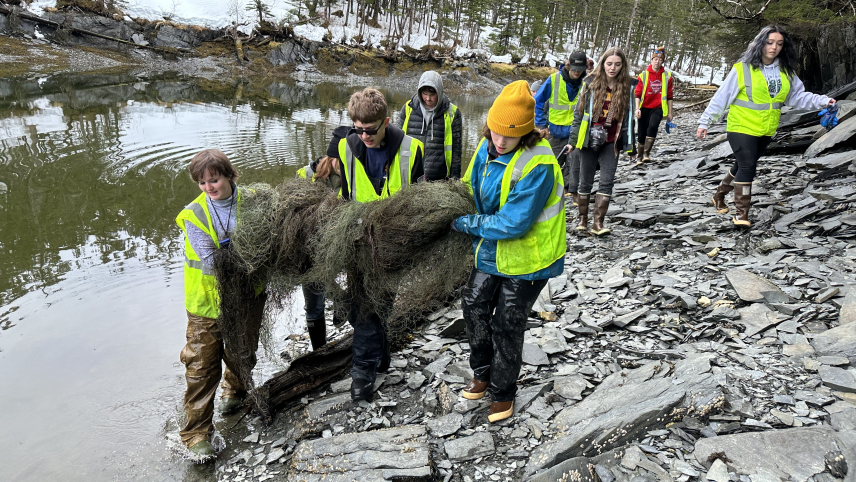
Students at Dimond High School in Anchorage, Alaska, are focusing on the 6Rs — refuse, rethink, reduce, reuse, rot, and recycle — in their third year as a NOAA Ocean Guardian School. In 2023, 39 students rented a bus and chartered a boat to pick up more than 600 pounds of marine debris from a remote beach in Whittier, Alaska. They then gave 400 pounds of the debris to local engineer Patrick Simpson of PKS Consulting, where it was sorted and the plastics were ground and extruded into recycled lumber. This lumber can reduce the need for new materials and be used for outdoor infrastructure like boardwalks, fencing, and picnic tables. The students also made a difference closer to home, where they spent more than 2,120 hours removing trash from their campus and community, collecting another 600 pounds of trash.
Students become stewards of a sensitive salt marsh
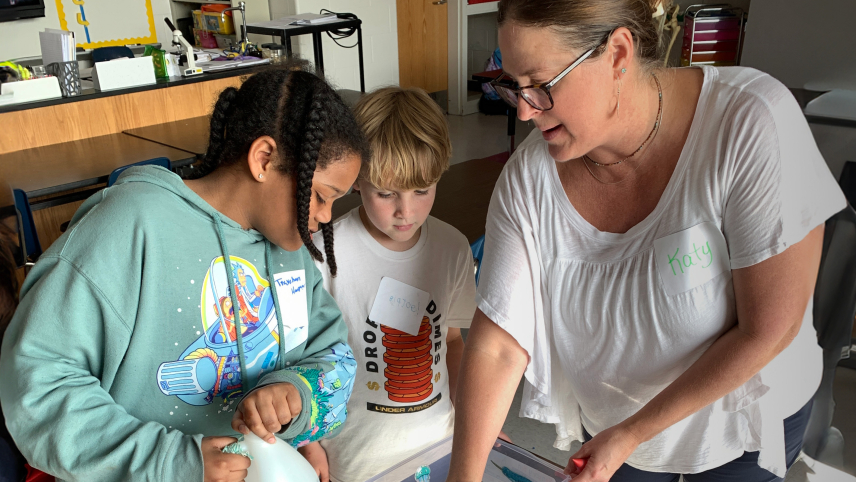
With support from NOAA Planet Stewards, University of Georgia Marine Extension and Georgia Sea Grant offsite link are working with Glynn Middle School students in Brunswick, Georgia, to remove potential marine debris from a sensitive salt marsh habitat along a highly traveled highway. High coastal winds and tides often sweep litter from the area into the local salt marsh, a coastal wetland that provides intertidal habitat essential for healthy fisheries, coastlines, and communities. The project plans to prevent 18 acres of salt marsh habitat degradation by removing at least 2,000 pieces of marine debris from the school’s property and the surrounding marsh. They also plan to remove at least 1,000 pieces of marine debris from a 160-acre area of the larger Brunswick community and coastal environment during a community-wide cleanup event in June 2024. In addition to removing marine debris, the program is educating the students to be aware of their plastic consumption and introducing creative ways to reduce plastic use and waste, recycle and upcycle plastics, and lessen their impact on the marine ecosystem.
The last straw: California school implements zero-waste lunch system
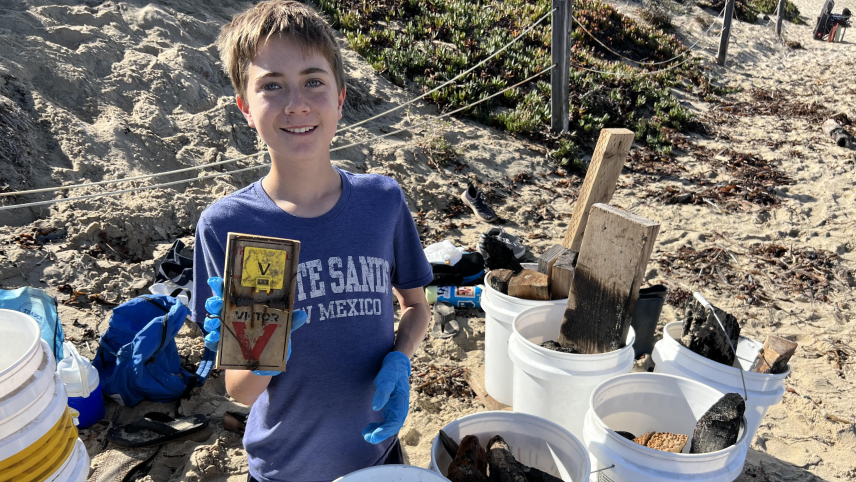
Monterey Bay Charter School, a NOAA Ocean Guardian School, continued their journey towards zero waste by fighting to reduce ocean plastic pollution on the school campus and local beach. One of the biggest accomplishments so far this year was the implementation of a zero-waste school lunch system. The student council worked with local waste hauler and waste management company ReGen to develop a new food waste composting system, so that all compostable foodware and food scraps could be turned into compost for local farmers. The school now has well-marked bins placed around campus and regularly trains students at Ocean Guardian assemblies on “what goes where.” Students and staff worked with the school lunch provider to provide waste-free, “family-style” lunches to students in fully reusable containers and foodware, and provide compostable foodware as a backup option. Participants found that now that they have a system down, going fully reusable has become a part of the community lifestyle and culture. The school also partnered with Save Our Shores to participate in the California Coastal Commission’s Adopt-A-Beach program, where they will organize and conduct three community beach clean-ups each year, collect data, and create stewardship signage with original student artwork.
From ridge to reef: Protecting Guam’s marine life through student efforts
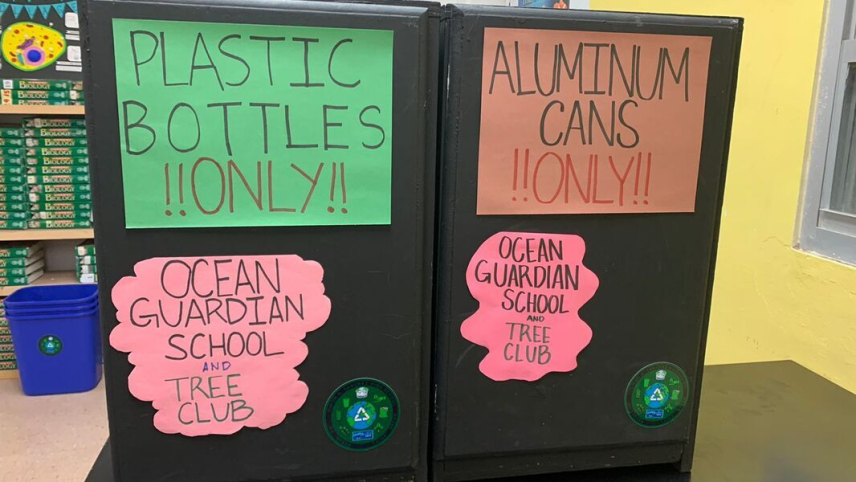
The NOAA Office of National Marine Sanctuaries, Office for Coastal Management, and Marine Debris Program, in partnership with the National Marine Sanctuary Foundation offsite link, supported the first NOAA Ocean Guardian School program in Guam across two high schools. At Simon A. Sanchez High School, students and teachers came together to carry out 40 beach and campus cleanups and install 60 recycling bins, four compost bins, and seven compost collection bins. This project involved five schools on the island, with participation from three teachers, 119 official student members who directly carried out the project, and an estimated 300 unofficial student members who provided feedback and assistance. In their own project, students and teachers from John F. Kennedy High School worked towards the goal of protecting the Tumon Bay Watershed and Tumon Bay Marine Preserve from marine debris. They implemented three main activities to achieve their goal: conducting cleanups in the watershed around their campus (including an illegal dumpsite across from their school), reducing plastic waste by providing reusable alternatives on campus, and advocating for the use of environmentally friendly products through posters, videos, and presentations. Together, these activities directly engaged 200 students and 10 teachers. Each project focused on implementing the 6Rs (refuse, rethink, reduce, reuse, rot, and recycle), promoting the stewardship and protection of Guam’s beautiful marine ecosystems!
No butts about it: Maryland students advocate for systematic changes surrounding cigarette-littered piers
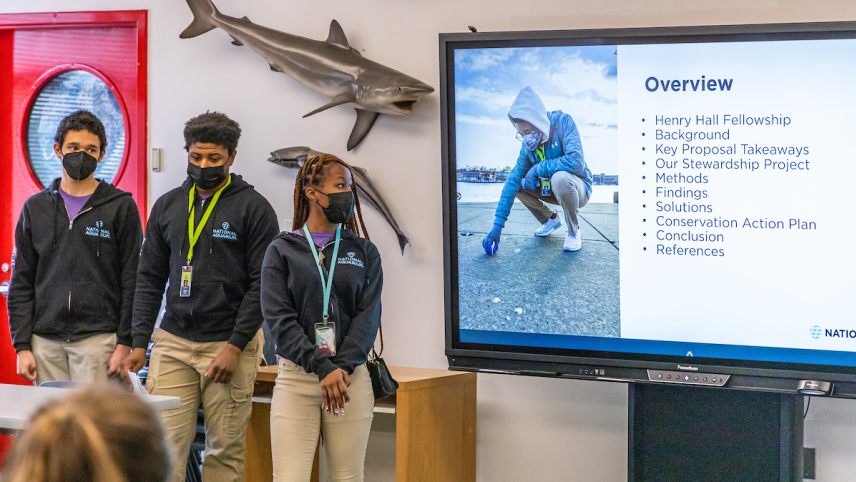
With support from NOAA Planet Stewards, 17 Baltimore high school students in the Henry Hall Fellowship offsite link program at the National Aquarium took on the issue of marine debris. The fellows worked with National Aquarium staff and an intern to conduct cleanup events along piers near the National Aquarium. Using the Litterati app to record and geotag trash found on piers, they collected more than 3,000 pieces of trash over three days. Fellows then analyzed the data and determined that the number one marine debris pollutant discovered was cigarette butts. The students identified solutions to mitigate cigarette butt littering, emphasizing working with local residents to prevent and mitigate land-based litter in Baltimore City. Using the advocacy and communication training they received, they generated an advocacy plan to create behavioral and systematic change for cigarette smokers, the National Aquarium, and Baltimore City’s Harbor. The plan included signs and stickers designed by fellows, an all-staff memorandum regarding cigarette butt disposal for National Aquarium staff and volunteers, and conversations with Waterfront Partnership, a group that includes many Inner Harbor adjacent businesses regarding the issue.



